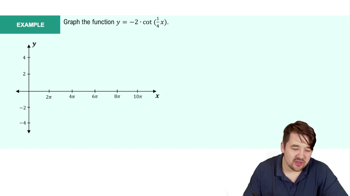Here are the essential concepts you must grasp in order to answer the question correctly.
Vertical Asymptotes
Vertical asymptotes occur in a function when the output approaches infinity as the input approaches a certain value. This typically happens at values of x that make the denominator of a rational function equal to zero, provided that the numerator does not also equal zero at those points. Identifying these points is crucial for understanding the behavior of the function near those values.
Recommended video:
Introduction to Cotangent Graph Example 1
Rational Functions
A rational function is a function that can be expressed as the ratio of two polynomials. In the given function f(x) = (x^2 - 3x + 2) / (x^10 - x^9), the numerator and denominator are both polynomials. Analyzing rational functions involves understanding how the degrees of the polynomials affect the function's behavior, particularly in terms of asymptotes and intercepts.
Recommended video:
Intro to Rational Functions
Factoring Polynomials
Factoring polynomials is the process of breaking down a polynomial into simpler components, or factors, that can be multiplied together to yield the original polynomial. This is essential for identifying the roots of the numerator and denominator in rational functions, which helps in determining vertical asymptotes and simplifying the function for analysis.
Recommended video:
Introduction to Polynomial Functions
 Verified step by step guidance
Verified step by step guidance Verified video answer for a similar problem:
Verified video answer for a similar problem:



 6:47m
6:47m